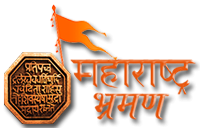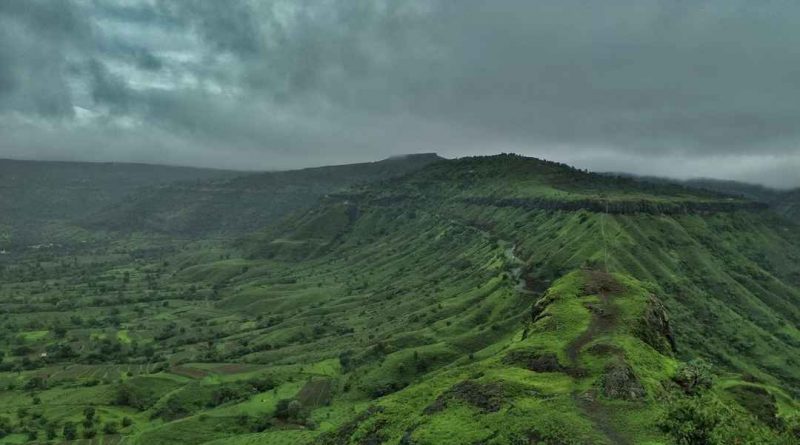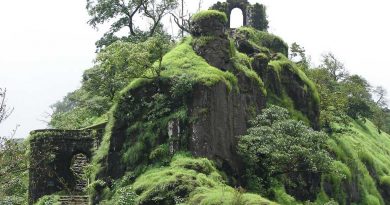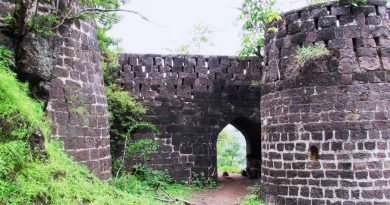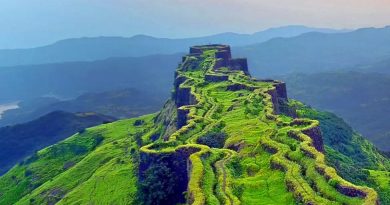Sajjangad Fort
Shambhu Mahadev is the sub range of Sahyadri starting from Pratapgad to eastern side…
Shambhu Mahadev is the sub range of Sahyadri starting from Pratapgad to eastern side. This range is divided into three parts and Sajjangad is situated on one of these sub ranges. One should touch the soil here sanctified by the feet of Samrath Ramdas Swami. Poet Anant has aptly described the place the sacred one, blessed by the existence of Lord hanuman and residence of Saint Ramdas Swami.
The fort stands 10 km away to the south- west of the Satara city in the ravine of the Urmodee or Urvashee River.
Type : Hill forts
Fort Range : Satara
District : Satara
Grade : Medium
History :
In ancient time, saint Ashwalayan resided on this hill, due to which the fort is also known as Ashwalayan gad. It also changed into Ashwalgad. The fort was created by king Bhoj from Shilahar dine sty in 11th century. The village at the base of the fort is as Parali so the fort was also called as, the fort of Parali. The mention of this fort is found in the region of the 4th Bahamani king Mahommad Shah (1358 to 1375). Later, it went in the hands of Adilshah who grabbed a portion of Bahamani state. The mention of Phajal khan is found in 1632 as the in charge of the fort. On 2nd April 1673, this fort was conquered by Shivaji maharaj from Adilshah.
Saint Samarth Ramdas permanently resided on this fort as per the request of Shivaji Maharaj. And the fort was named as Sajjangad. Then, after coronation, Shivaji Maharaj came for séance of Samarth on 3-11-1678, Shivaji sent Sambhaji to Sajjangad. However, Sambhaji ran away from Sajjangad on 3rd December 1678 and joined Dilerkhan. After unfortunate death of Shivaji Maharaj on 18 January 1682, the idol of Shriram was on the fort. Ramdas Swami also passed away on 22-1-1682. Though Samarth transferred all the rights regarding the fort to Divakar Gosavi, the administration was allotted to Bhanji and Ramji Gosavi. However conflicts arose between them. When Sambhaji heard about it, he wrote to Jijoji Katkar, the Killedar of Sajjangad. The letter intended to settle the dispute and to follow the orders of the respected elder people.
Later on 21 April 1700, the fort was captured by Moghals and named by then as ‘Nauras-Satara’. In 1709 Marathas captured the fort. However in 1818 the fort fell in the hands of British.
Fascinating Spots :
The first entrance to the fort is known as “Chhatrapati Shivaji Maharaj Dwar”. It faces southeast. The second gate is ‘Samarth Dwar’ and faces east. Even today these gates are closed after 10 pm. While entering into the second gate, we can see a stone inscription. The meaning of it is as follows:
1) The Prosperity is seen as we enter your door.
2) The courage by his deeds is blooming the flowers.
3) You are the place to remove all the worries. But you are free from them.
4) The worries are put away from you.
5) The base of the building gate on fort was created on the date –3rd Janadilakhar. The works were carried under the rule of Adilshah Rehan.
There is a tree at right side of the entranceway of the fort. From this tree, there is a way to the right. After walk of 15 minutes, we reach the place known as “Ramghal”. This was the place of meditation for Samarth Ramdas.
After entering into the fort, turn to left. There is a lake by name Ghodale, which was meant for horses. Behind this there is a building similar to a mosque and the temple of Anglai. Samarth Ramdas discovered the idol of Anglai in Angapur, along with the idol of Shreeram in Chaphal.
After visiting to these places, to come back from the same way towards the lake and go straight.
On the way there is a restaurant, Shree Samarth office and lodge. Sonale Lake is near to this lodge. The water here is potable. Behind the lake we can see a garden. Heading straight from the lake, we reach a temple. We can see here temple of Lord Hanuman and an ashram named “Sridhar Kuti” near to it. To the right side is the temple of Shreeram, monastery of Ramdas Swami and the room where Ramdas Swami resided. All the things which Samarth Ramdas used daily are preserved here. After seeing these all places, as we exit from the main entrance of the temple and go to left, we see “Bramhapisa” temple and then the Hanuman temple, which is known as temple of “Dhaabyacha Maruti”. The fortification is clearly visible from this point. The surrounding region is very beautiful and pleasant. It takes two hours to see the fort.
How to reach:
From Gajwadi :
Gajwadi is 3 km before Parali Rd. From this place it’s possible to reach at the top of the fort directly by vehicle. After going 100 steps further, we reach at the gate. It takes 15 minutes approximately to reach to the fort from road.
From Parali :
The distance between Satara and Parali is 10 km Parali is at the base of fort. To reach to the fort, one has to go by 780 steps and these steps take you to the main gate of the fort. One hour is enough to reach the top from Parali.
